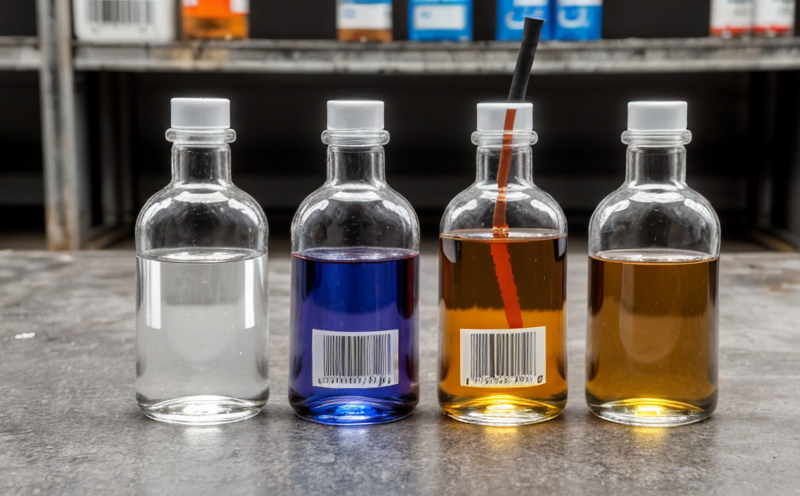JIS K6257 Rubber Aging Stability Testing
The JIS K6257 standard is an essential tool in assessing the aging stability of rubber materials. This testing method evaluates how well a rubber product retains its physical and chemical properties under conditions that simulate real-world usage over time. The test simulates the effects of heat, light, and oxygen exposure on rubber components to determine their resistance to degradation.
This type of testing is critical for industries such as automotive, aerospace, and footwear where rubber parts are subject to harsh environmental conditions. By understanding how these materials perform under aging stress, manufacturers can improve product durability, enhance safety, and optimize material selection.
The JIS K6257 test method involves placing samples in an accelerated aging chamber designed to mimic the effects of sunlight, heat, and humidity. The specimens are exposed to controlled conditions that represent a typical use environment over a period equivalent to several years under normal operating conditions. This process allows for the early detection of potential performance issues without requiring long-term field testing.
The test protocol specifies exact time durations and temperature ranges based on the expected service life of the rubber component being tested. For instance, automotive tires might undergo a 100-hour exposure to high-temperature conditions to simulate aging over several years in use. The samples are then inspected for changes in color, texture, hardness, tensile strength, and other critical properties.
The results of this testing provide valuable insights into the longevity and reliability of rubber components. Engineers can use these findings to refine formulations, select more durable materials, or improve design to better withstand environmental stressors. Compliance with JIS K6257 standards ensures that products meet industry benchmarks for quality and performance.
- The test helps in identifying early signs of degradation before significant damage occurs.
- It supports the development of more resilient rubber materials suitable for extended use in challenging environments.
- This testing is crucial for ensuring product safety, especially in applications involving high-stress components like brake pads and seals.
The rigorous nature of JIS K6257 ensures that manufacturers can rely on consistent and accurate results across different batches or suppliers. This standardization fosters trust among industry stakeholders and facilitates smoother supply chain management by providing clear specifications for rubber aging stability.
For quality managers, compliance officers, R&D engineers, and procurement professionals, understanding the nuances of JIS K6257 testing is vital in ensuring that products meet stringent international standards. This knowledge enables informed decision-making regarding material selection, process optimization, and product lifecycle management.
Why It Matters
The importance of JIS K6257 testing cannot be overstated in the context of rubber materials. Aging stability is a key factor in determining the overall performance and lifespan of rubber products. Poor aging resistance can lead to premature failure, reduced product reliability, increased maintenance costs, and safety risks.
For instance, in the automotive industry, rubber components such as tires, belts, and hoses are exposed to extreme conditions during use. Without proper testing, these parts could degrade rapidly, leading to potential accidents or vehicle breakdowns. JIS K6257 provides a standardized approach to assessing aging resistance, ensuring that manufacturers can produce safe, reliable products.
From an economic perspective, investing in robust rubber aging stability tests can help companies reduce waste and improve efficiency. By identifying weak points early in the development process, engineers can make necessary adjustments before mass production begins, thereby saving time and resources. Additionally, compliance with international standards like JIS K6257 enhances a company's reputation and market competitiveness.
On a broader scale, ensuring high-quality rubber products contributes to environmental sustainability by promoting the use of durable materials that last longer in service. This reduces the demand for frequent replacements, which in turn minimizes waste generation and resource consumption.
International Acceptance and Recognition
The JIS K6257 rubber aging stability test is widely recognized across various industries and regions. Its international acceptance stems from the robust methodology it employs, which has been validated through extensive research and practical application.
This standard is particularly valuable in countries that adhere to JIS (Japanese Industrial Standards) guidelines, such as Japan itself and other Asian markets. However, its influence extends beyond geographical boundaries due to its relevance across multiple sectors, including automotive, aerospace, and consumer goods.
Manufacturers who comply with JIS K6257 standards benefit from enhanced credibility in global markets. Compliance signals a commitment to quality and reliability, which is increasingly important as industries face stringent regulatory requirements and growing consumer expectations for sustainable products.
The standard’s widespread adoption also facilitates smoother international trade by ensuring compatibility between different manufacturers' processes and products. This interoperability reduces barriers to entry into foreign markets and promotes innovation through shared best practices.
Environmental and Sustainability Contributions
By ensuring that rubber products are stable under aging conditions, JIS K6257 testing contributes significantly to environmental sustainability. The reduction in premature failures leads to less waste generated from discarded components. This efficiency supports the circular economy by promoting the reuse of materials and reducing resource consumption.
- The test helps in developing more durable rubber products that last longer, thus minimizing the need for frequent replacements.
- Enhanced durability reduces the environmental impact associated with production, transportation, and disposal of non-functional components.
- Compliance with JIS K6257 ensures that rubber materials are used efficiently, contributing to overall resource conservation.
In summary, JIS K6257 testing plays a crucial role in fostering sustainable practices within the rubber industry. By prioritizing product longevity and reliability, this standard supports efforts towards environmental stewardship and responsible resource management.





